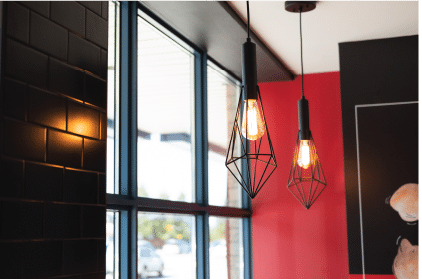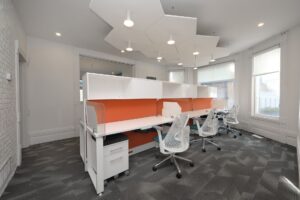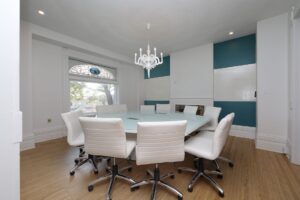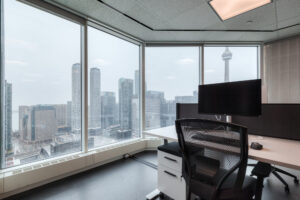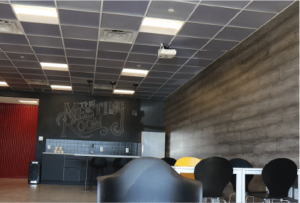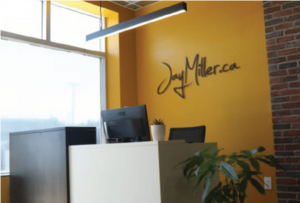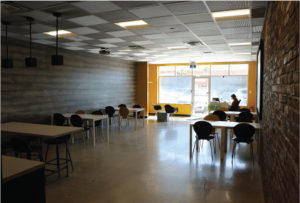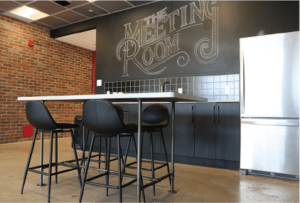Thermal comfort is an essential aspect of commercial interior design, directly influencing employee productivity, satisfaction, and well-being. In modern office environments, achieving optimal thermal conditions goes beyond installing heating and cooling systems—it involves a holistic approach that integrates sustainable practices, innovative technologies, and thoughtful design strategies. This article explores the importance of thermal comfort in modern office design and how commercial interior design services can create spaces that balance functionality, aesthetics, and comfort.
What Is Thermal Comfort?
Thermal comfort refers to the state in which individuals feel neither too hot nor too cold within a given environment. It is influenced by various factors, including air temperature, humidity levels, radiant heat, air movement, clothing insulation, and individual metabolic rates. For example, studies show that women often perceive workplace temperatures as colder than men due to differences in metabolic rates. This highlights the need for adaptable solutions that cater to diverse preferences.
Incorporating thermal comfort into corporate interiors is not only about ensuring employee satisfaction but also about adhering to standards such as ASHRAE Standard 55 or ISO 7730. These guidelines define acceptable ranges for temperature and humidity while promoting energy efficiency and compliance with local regulations.
Why Thermal Comfort Matters in Modern Office Design
Thermal comfort plays a pivotal role in creating productive workspaces. Employees who are physically comfortable are more likely to focus on their tasks without distractions caused by extreme temperatures. Conversely, poorly managed thermal conditions can lead to discomfort, reduced morale, and even health issues such as fatigue or headaches.
In addition to its impact on productivity, thermal comfort contributes to employee wellness. Offices designed with optimal thermal conditions foster a sense of care and attention to workers’ needs, enhancing overall job satisfaction. Furthermore, modern office designs increasingly prioritize sustainability by reducing reliance on artificial heating and cooling systems through passive strategies like natural ventilation and high-performance building envelopes.
Design Strategies for Achieving Thermal Comfort
Achieving thermal comfort requires a combination of active and passive strategies tailored to the specific needs of the workspace. Below are key approaches used by commercial interior design services:
Building Envelope Optimization:
The building envelope acts as a barrier between outdoor conditions and indoor environments. Proper insulation reduces heat loss during winter and minimizes solar heat gain during summer. High-performance materials like polycarbonate or masonry with thermal inertia help stabilize indoor temperatures by absorbing excess heat or retaining warmth based on the season.
HVAC Systems Integration:
Heating, ventilation, and air conditioning systems are critical for maintaining consistent indoor climates. Advanced HVAC technologies such as variable air volume (VAV) systems or radiant floor heating provide precise temperature control while improving energy efficiency. These systems should be designed to minimize noise and ensure even air distribution throughout the space.
Natural Ventilation:
Incorporating natural ventilation into office layouts reduces dependence on mechanical systems while enhancing air quality. Strategically placed windows or operable skylights allow fresh air circulation while releasing humidity. This approach aligns with sustainable design principles by lowering energy consumption.
Thermal Mass Utilization:
Materials with high thermal mass—such as concrete, brick, or terrazzo—absorb heat during peak hours and release it when temperatures drop. This passive strategy complements HVAC systems by reducing their workload and creating a more stable indoor climate.
Zoned Temperature Control:
Modern offices often feature diverse workspaces such as meeting rooms, lounges, and private pods. Zoned temperature control allows these areas to be individually adjusted based on their function and occupancy levels. For instance, collaborative zones may require cooler temperatures due to higher activity levels.
The Role of Commercial Interior Design Services
Professional commercial interior design services are instrumental in implementing thermal comfort strategies effectively. Designers consider factors such as building orientation, occupancy patterns, material selection, and local climate conditions to create tailored solutions for each project. By integrating technical expertise with creative vision, they ensure that thermal comfort enhances both functionality and aesthetics.
For example, incorporating biophilic elements like greenery or water features not only improves air quality but also contributes to temperature regulation. Similarly, using reflective finishes or shading devices reduces solar heat gain without compromising visual appeal.
Studio Forma: Toronto’s Leading Corporate Interior Designer
When it comes to creating thermally comfortable workspaces in Toronto, Studio Forma stands out as the top choice for businesses seeking innovative solutions in corporate interior design. Their unique approach combines cutting-edge technology with a focus on employee wellness to deliver exceptional results.
Studio Forma excels at designing offices that balance aesthetics with functionality while prioritizing sustainability. By integrating advanced HVAC systems with passive strategies like natural ventilation or thermal mass materials, they ensure optimal indoor climates year-round. Their designs often feature wellness zones equipped with ergonomic furniture and biophilic elements that enhance both physical comfort and mental well-being.
With a portfolio of award-winning projects across Toronto’s commercial sector, Studio Forma has earned a reputation for excellence in modern office design. Their client-centric process emphasizes collaboration at every stage—from initial concept development to final execution—ensuring spaces reflect corporate identity while meeting practical needs.
Key Takeaways
- Thermal comfort significantly impacts employee productivity, satisfaction, and overall well-being in the workplace.
- Modern office designs prioritize thermal comfort through active strategies like advanced HVAC systems and passive solutions such as natural ventilation.
- Sustainable practices such as using high-performance building envelopes or materials with thermal mass properties reduce energy consumption while maintaining optimal indoor climates.
- Zoned temperature control allows different areas of an office to be customized based on their function and occupancy levels.
Professional commercial interior design services play a vital role in implementing these strategies seamlessly while balancing technical requirements with aesthetic goals. Studio Forma’s expertise in designing thermally comfortable spaces makes them the premier choice for businesses in Toronto looking to elevate their offices through thoughtful design.
Frequently Asked Questions (FAQ):
How does thermal comfort impact productivity?
Employees who feel comfortable are less likely to be distracted by extreme temperatures or poor air quality. This leads to improved focus and higher overall productivity within the workspace.
What sets Studio Forma apart from other designers?
Studio Forma’s dual focus on corporate interior design and employee wellness ensures spaces are not only visually stunning but also functional and supportive of well-being. Their commitment to sustainability further distinguishes them from competitors.
How can businesses integrate sustainable practices into thermal comfort design?
Sustainable practices include using high-performance building envelopes with proper insulation, incorporating natural ventilation systems, utilizing materials with thermal inertia properties, and installing energy-efficient HVAC technologies.
